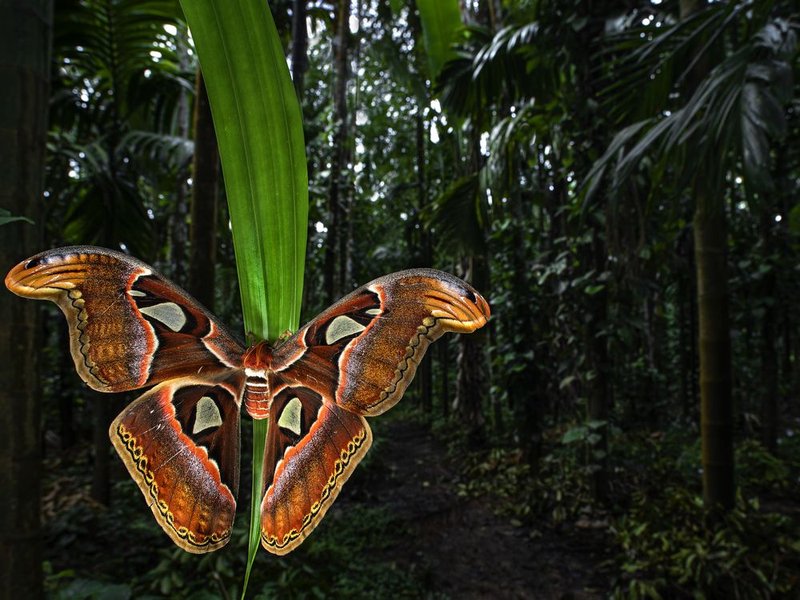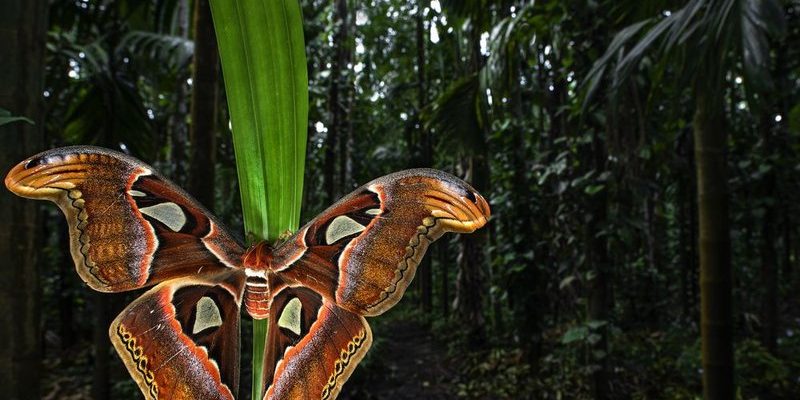
Imagine a bustling marketplace, where everyone has a part to play: vendors, shoppers, and helpers. Each one contributes to the vibe and success of that marketplace. In this analogy, the Atlas Moth is like the busy vendor who brings something unique and essential to the table. So, why should we care about this incredible moth? Let me explain how it impacts its surroundings and why it’s an integral part of the ecosystem.
What is the Atlas Moth?
The Atlas Moth (Attacus atlas) is one of the largest moths in the world. Its wingspan can reach up to 10 inches, making it a true giant among insects. The moth’s wings are adorned with beautiful patterns that mimic the appearance of snake heads, likely serving as a defense mechanism against predators. This natural camouflage is a smart survival tactic, like wearing a disguise at that lively marketplace we talked about.
Atlas Moths undergo a fascinating life cycle that includes four main stages: egg, larva (caterpillar), pupa (cocoon), and adult moth. Each stage plays a crucial role in its development. The caterpillars are known for their voracious appetite, munching on a variety of leaves from trees like avocado and guava. This feeding frenzy helps control the plant population and contributes to the health of the forest.
You might be wondering how this giant moth fits into the ecosystem. Well, let’s dive deeper!
The Pollination Powerhouse
Here’s the thing: Atlas Moths aren’t just pretty faces; they’re essential pollinators, too. As they flutter from flower to flower, they help plants reproduce by transferring pollen. Think of them as nature’s delivery service for plant fertility.
While they may not be as famous as bees, Atlas Moths visit flowers at night, when many other pollinators are resting. They have a special attraction to certain flowers that bloom in the dark, making them unique night-time pollinators. This helps diversify the plant population and supports the overall health of the ecosystem.
Not all plants can thrive without pollinators. In fact, many tropical plants depend on the Atlas Moth and other moths or nocturnal creatures for their survival. Without this vital connection, the garden of life would face challenges.
Food Sources and Predators
Every creature has its role, and the Atlas Moth is no exception. While they’re magnificent adults, they start as larvae that become snacks for a variety of creatures. Birds, lizards, and even some mammals feast on these caterpillars. This helps regulate the moth population and ensures that resources are balanced within the ecosystem.
But what about the adult moth? They may be large, but they’re not invincible. Birds, bats, and even reptiles will target them as a food source. This predation keeps the population in check, preventing overpopulation, which could lead to overconsumption of resources in their habitat.
In many ways, it’s a game of balance. While Atlas Moths serve as prey, they also help sustain the plants on which their larvae feed. The cycle of life continues, with each species playing a part in the broader story of their ecosystem.
Impact on Biodiversity
Biodiversity is like a rich tapestry, with each thread representing a unique species contributing to the overall picture of life. The Atlas Moth plays a role in this tapestry by fostering biodiversity. Its presence supports various plants and insects, creating a vibrant environment.
When Atlas Moths pollinate plants, they promote the growth of diverse flora. This, in turn, attracts other organisms, from smaller insects to larger animals. The more diverse the ecosystem, the more resilient it is to changes, like climate shifts or diseases.
You see, a healthy ecosystem is kind of like a well-balanced team. Each member, including the Atlas Moth, contributes to a strong foundation that can withstand challenges. Losing any one member can destabilize the whole group, underscoring the importance of this magnificent moth.
Threats to the Atlas Moth
Sadly, the Atlas Moth faces several threats that put its existence at risk. Habitat loss due to deforestation is a primary concern. When forests are cleared for agriculture or urban development, these moths lose their homes and food sources.
Additionally, climate change impacts their habitats and food availability. As temperatures shift and weather patterns change, the delicate balance that supports the Atlas Moth and its ecosystem is disrupted. This can lead to a decline in their populations.
Conservation efforts are crucial to protect not just the Atlas Moth but the entire ecosystem it supports. Initiatives aimed at preserving their natural habitats and promoting awareness about their ecological role can help ensure their survival.
Why the Atlas Moth Matters to Us
You might think, “Why should I care about a giant moth?” Well, it’s about more than just this one species. The Atlas Moth is part of a larger ecosystem that benefits humans directly and indirectly. Healthy ecosystems contribute to clean air, water, and fertile soil—all essential for human life.
Moreover, the diversity of life on Earth contributes to medicine, agriculture, and recreation. When we protect species like the Atlas Moth, we’re preserving potential resources that can enhance human life, too. It’s like investing in our future by safeguarding the natural world.
So, next time someone brings up moths, you can share all about the incredible Atlas Moth and its vital role in maintaining a healthy environment. Isn’t it fascinating how interconnected we all are?
How You Can Help
If you’re inspired to make a difference, there are simple ways to contribute to the protection of the Atlas Moth and its habitat. Here’s how you can get involved:
- Support Conservation Organizations: Many groups are dedicated to preserving habitats and supporting research on the Atlas Moth.
- Plant Native Vegetation: If you have a garden, consider planting local flowers that attract moths and butterflies.
- Spread Awareness: Share information about the Atlas Moth and its role with friends and family to foster a broader appreciation for biodiversity.
By taking these small steps, you can make a meaningful impact on preserving not just the Atlas Moth but the entire ecosystem it inhabits.
In conclusion, the Atlas Moth might seem like just another insect, but its role in ecosystems is profound. From pollination to supporting biodiversity, this majestic creature plays an essential part in the web of life. Protecting the Atlas Moth means protecting our environment and the many benefits it offers us. So let’s appreciate and safeguard this incredible insect for generations to come!

